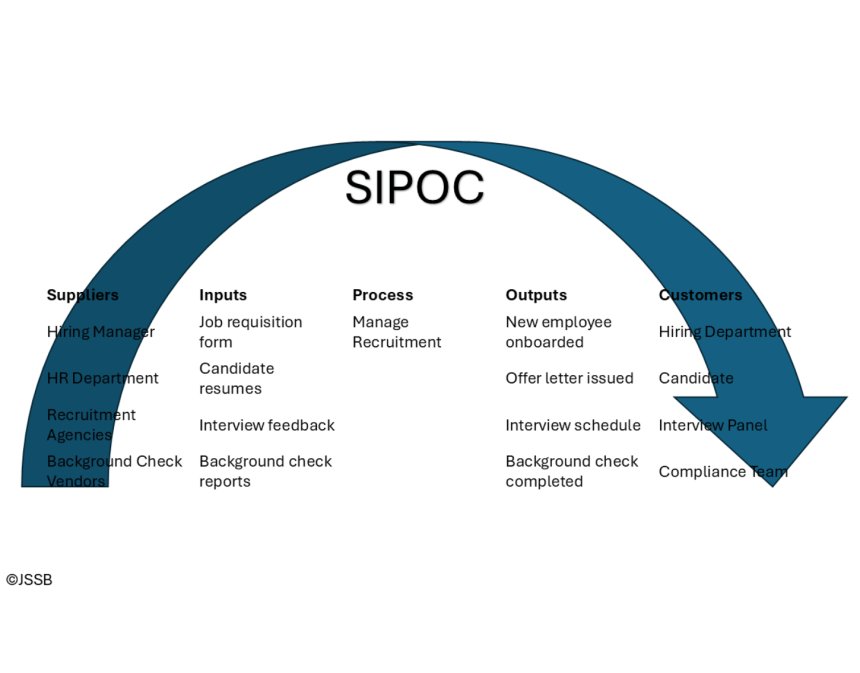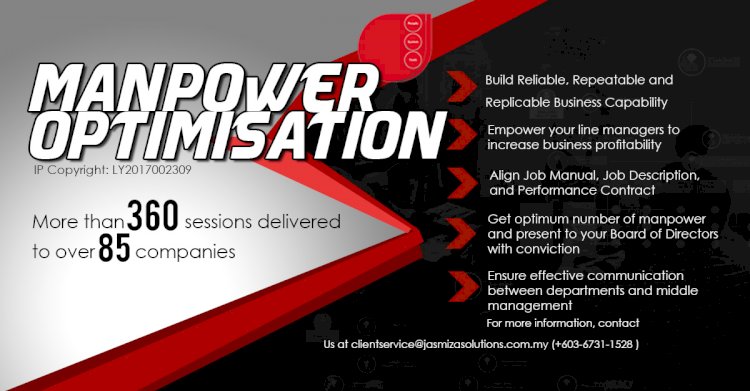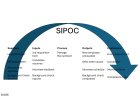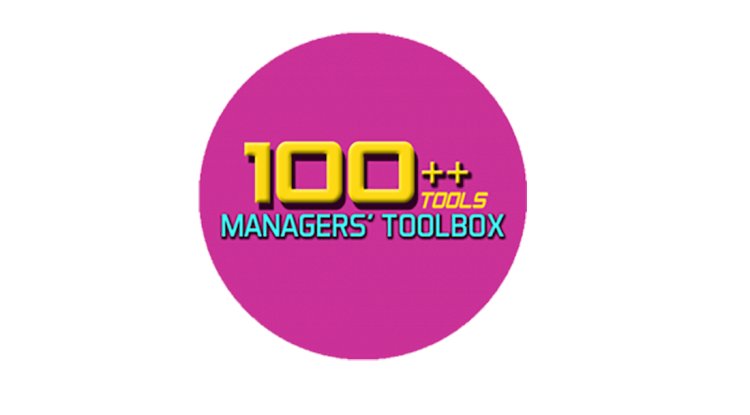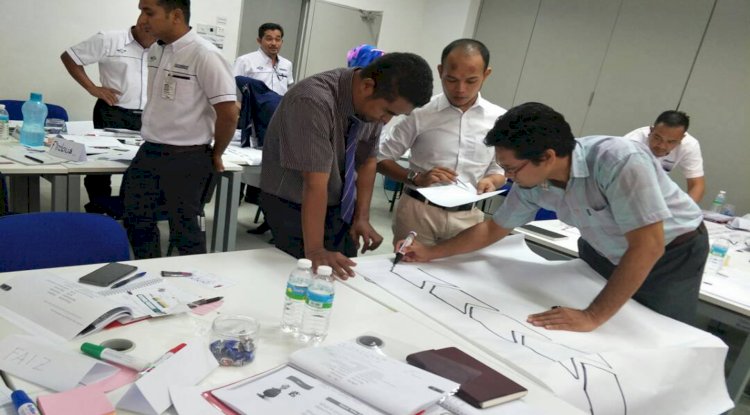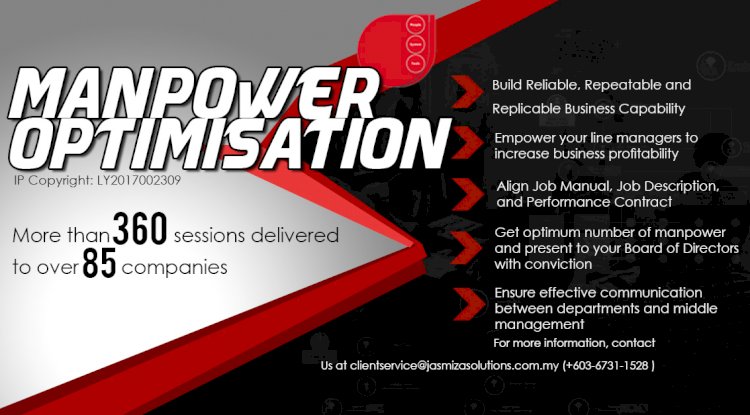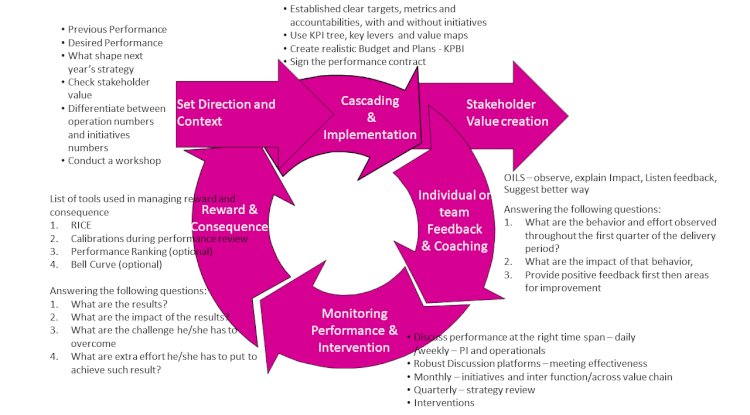How to Kick-Start Your Manpower Optimization?
Manpower Optimization (MO) is indeed an important process for any organization to systematically assess their current organizational needs. Once completed, the exercise will not only reveal your organizations’ weaknesses at present but it can also shed some light on the plus points and competitive advantages already embedded within the organizations which may have been previously, overlooked. These internal strengths are without an iota of doubt, will be pivotal for the organizations’ continued success in the current challenging times.

Manpower Optimization (MO) is indeed an important process for any organization to systematically assess their current organizational needs. Once completed, the exercise will not only reveal your organizations’ weaknesses at present but it can also shed some light on the plus points and competitive advantages already embedded within the organizations which may have been previously, overlooked. These internal strengths are without an iota of doubt, will be pivotal for the organizations’ continued success in the current challenging times.
The Journey of A Thousand Miles
As the saying goes, the journey of a thousand miles begins with a single step, all great transformations also normally start with somewhat humble beginnings. To ensure an effective MO, the process must be started with a very simple yet powerful organizational evaluation process which is called the Key Value Chain Analysis or in short KVC Analysis.
This analysis takes its roots from Porter’s Value Chain Model and further tweaked in JSSB to make it even more useful and handy for use in various organizational settings. It is in actuality a step-by-step process to identify the key functional drivers in the organizations that add values to the initial raw materials and resources until they become valuable offerings in both physical products or services that are appealing and competitive to the organizations’ corresponding market segment.
The analysis normally begins with a facilitated workshop that includes primarily the key leaders in the involved organization with the aim to construct a coherent picture of the organization’s own unique functional value chain. The value chain will be comprised of 2 major categories namely, the main value chain and the supporting value chain.
The main value chain should comprehensively and sequentially show the value additions from all main functional units in the organization starting from the relevant business planning process, raw materials/resources procurement up to the final release of the products or services to the market (together with the corresponding after-sales services if relevant), by the responsible functional unit at the end of the value chain.
The supporting value chain, on the other hand, deals mostly with supporting functional units within the organization that provides services to the functional units in the main value chain to ensure that these main functional units can perform to their level best. This supporting value chain normally includes functions such as IT services, legal services, Finance and HR.
However, it is important to note here that, the division between these 2 categories is very much dependent on the context and nature of the said organization’s business model itself. A manufacturing company will definitely have a different value chain from say, a legal firm or an HR management consultancy. That is why in JSSB, this KVC Analysis is always done together with the clients’ key leaders in order to ensure that the generated outcome from the process truly represents the organizations’ current set-up and business aspirations.
What is next?
As simple as it may look, KVC Analysis will most of the time challenge the organizations’ key leaders of THEIR accurate understanding of the organizations’ critical components at the heart of their business model. In fact, many of our clients responded by saying that, the results from this humble process is indeed an eye-opener (read: mind-opener) in the sense that for the first time they are able to have a seamless and integrated view of their whole operational model that transforms their initial resources to the coveted dollars and cents.
Nevertheless, this should not be the end in itself. Once the organization’s corresponding key value chain has been constructed as coherently as possible so as to capture all of the relevant functional processes that are involved in the business, the next step is further zoom into the key objectives of the individual functional business processes.
For instance, if the generated key value chain is comprised of 8 functional processes, the key leaders must later ask themselves on what are the key objectives of all 8 of the listed functional business processes.
They need to really answer for example, what is the key objective of the ‘Manage Planning & Budgeting’ function? How about the key objective for the ‘Manage Finance & Account’? And the list goes on until all functional processes are covered.
At this juncture, you may have responded that the key objectives of such processes are obviously self-explanatory from the titles and the names of the functions themselves. Well, that is not quite the whole story yet. The titles and names of the functional processes are merely clues to what that are actually expected for these functions to deliver. They are NOT functional key objectives.
When we say functional key objectives here, what does it mean is that the key leaders must brainstorm and articulate the No.1 reason for each and every one of those functional business processes. It has to be one single objective (and not two or more) that truly describes the very raison d’etre of that function.
Let us take the ‘Manage Production’ function as an example. We would argue that, ‘To ensure a safe and uninterrupted production in line with the targeted production rate’ may be a reasonable key objective for that particular functional process if that really encapsulates the organization’s aspiration for the Production function.
However, if the key leaders feel that it would be better if certain additional qualifiers be added as part of the organization’s future aspiration to consolidate certain costs and resources, the key objective could be further tweaked to capture these new realities or challenges. In that case, perhaps, ‘To ensure a safe, EFFICIENT and uninterrupted production in line with the target production rate and OEE’ would be the more descriptive wording for the Production’s key objective.
As you may have guessed it right, both KVC Analysis and Key Objective identification are both dynamic and fluid in nature. The priorities and even the construct will change according to business needs and more importantly, these will definitely change when the business model itself requires further re-alignment or even transformation.
There you have it. Two key ingredients to kick-start your Manpower Optimization journey. They may look simple and straightforward, but just a word of caution, they are far from easy. And that is how JSSB can help you along the way.
Share
 Like
1
Like
1
 Dislike
0
Dislike
0
 Love
0
Love
0
 Funny
0
Funny
0
 Angry
0
Angry
0
 Sad
0
Sad
0
 Wow
1
Wow
1
